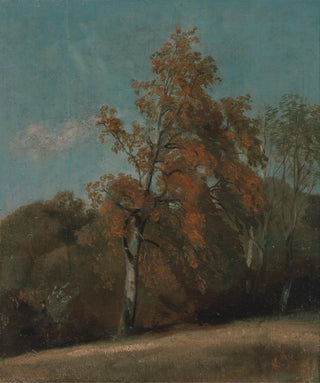Art print | Study of a ash tree - John Constable


View from behind

Frame (optional)
John Constable's "Study of a Ash" is a true ode to nature, a masterpiece that transcends a simple sketch to become a poetic reflection on the beauty of the plant world. In this art print, the artist manages to capture the very essence of the tree, a symbol of strength and resilience, while evoking an atmosphere of serenity. Although it is a preparatory study, the work already reveals Constable's technical mastery and his deep attachment to the English countryside. By contemplating this piece, the viewer is invited to immerse themselves in a universe where light plays with shapes and where every detail, even the most subtle, tells a story.
Style and uniqueness of the art print
The originality of "Study of a Ash" lies in how Constable uses color and texture to bring his subject to life. His realistic approach, combined with an impressionist sensitivity, allows one to almost physically feel the roughness of the bark and the flexibility of the branches. The artist does not merely reproduce an ash; he captures its soul, revealing an emotional dimension that touches the viewer's heart. The brushstrokes, both precise and free, create a dynamic between faithful representation and personal interpretation. This duality gives the art print an evocative power that encourages contemplation and reflection on our relationship with nature.
The artist and his influence
John Constable, an iconic figure of the English landscape, knew how to mark his era with an innovative approach to painting. Born in 1776, he dedicated his life to representing the beauty of the landscapes of his native Suffolk. His work was deeply influenced by his love of nature and his desire to capture the light and atmosphere of the places he painted. Constable was also a pioneer in the use of plein air painting, a method that allowed him to account for climatic variations and the effects of light on his subjects. His legacy endures through generations of artists inspired by his unique vision, making him the

Matte finish

View from behind

Frame (optional)
John Constable's "Study of a Ash" is a true ode to nature, a masterpiece that transcends a simple sketch to become a poetic reflection on the beauty of the plant world. In this art print, the artist manages to capture the very essence of the tree, a symbol of strength and resilience, while evoking an atmosphere of serenity. Although it is a preparatory study, the work already reveals Constable's technical mastery and his deep attachment to the English countryside. By contemplating this piece, the viewer is invited to immerse themselves in a universe where light plays with shapes and where every detail, even the most subtle, tells a story.
Style and uniqueness of the art print
The originality of "Study of a Ash" lies in how Constable uses color and texture to bring his subject to life. His realistic approach, combined with an impressionist sensitivity, allows one to almost physically feel the roughness of the bark and the flexibility of the branches. The artist does not merely reproduce an ash; he captures its soul, revealing an emotional dimension that touches the viewer's heart. The brushstrokes, both precise and free, create a dynamic between faithful representation and personal interpretation. This duality gives the art print an evocative power that encourages contemplation and reflection on our relationship with nature.
The artist and his influence
John Constable, an iconic figure of the English landscape, knew how to mark his era with an innovative approach to painting. Born in 1776, he dedicated his life to representing the beauty of the landscapes of his native Suffolk. His work was deeply influenced by his love of nature and his desire to capture the light and atmosphere of the places he painted. Constable was also a pioneer in the use of plein air painting, a method that allowed him to account for climatic variations and the effects of light on his subjects. His legacy endures through generations of artists inspired by his unique vision, making him the






